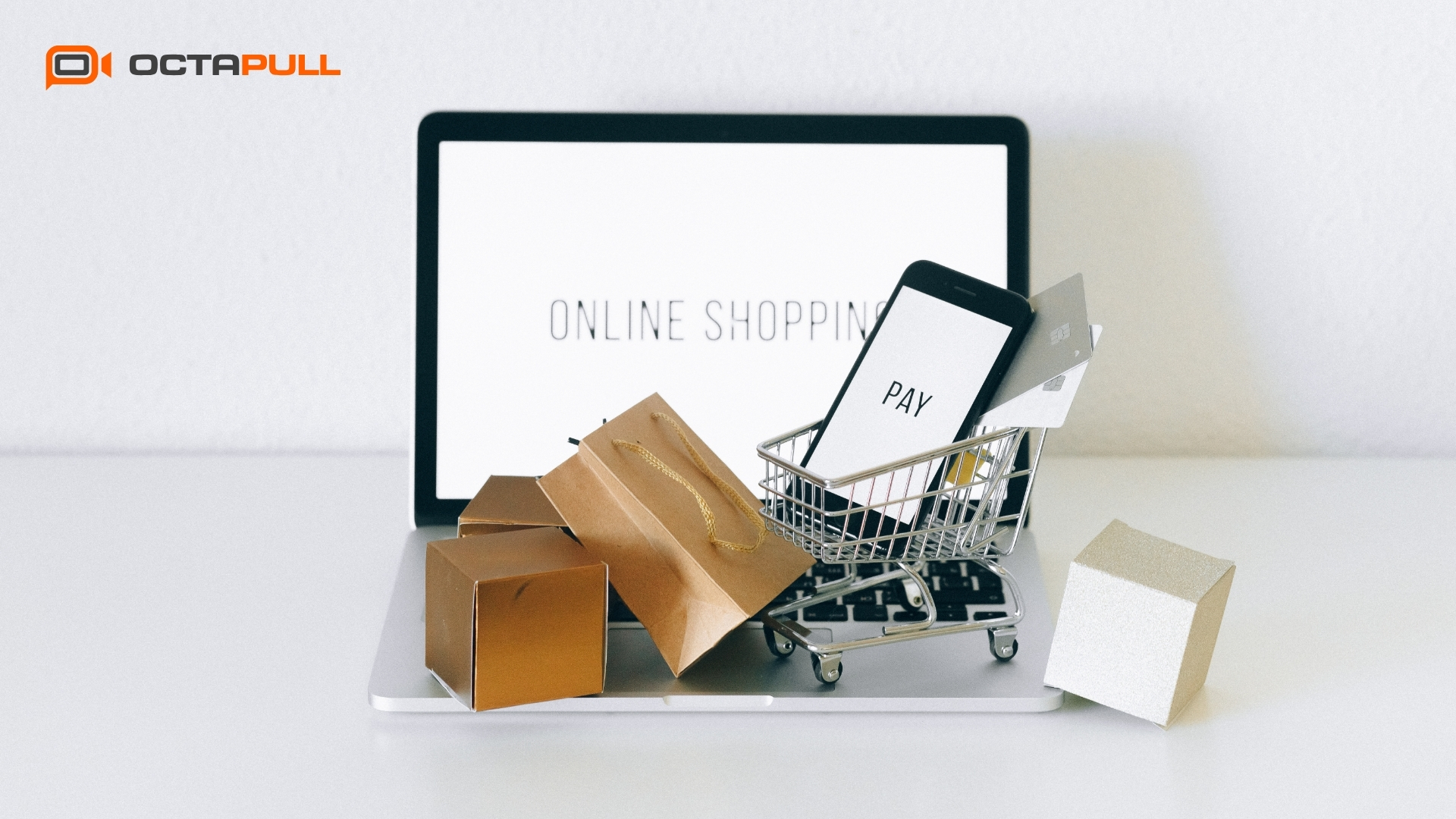E-commerce (short for electronic commerce) is changing the way people shop. Instead of visiting a physical store, millions now purchase products and services online, ranging from clothing and electronics to groceries and digital content.
In this blog post, we’ll first explain what e-commerce is and how it works in 2025, then take a look at the top 10 trends shaping the future of online shopping. You’ll learn how new technologies are making e-commerce faster, smarter, and more personal.
What Is E-Commerce? (E-Commerce 101)
E-commerce refers to the buying and selling of goods or services over the internet. Whether it’s ordering a pair of shoes from your phone or booking a service online, any transaction made digitally falls under e-commerce.
Types of E-Commerce
There are several different types of e-commerce models:
- B2C (Business to Consumer): A company sells directly to individual customers (e.g., Amazon, Zara).
- B2B (Business to Business): One business sells products or services to another (e.g., software providers, wholesalers).
- C2C (Consumer to Consumer): People sell to each other through platforms (e.g., eBay, Facebook Marketplace).
- D2C (Direct to Consumer): Brands sell directly to customers without going through retailers (e.g., Glossier, Warby Parker).
How E-Commerce Works in 2025
In 2025, e-commerce is smarter, faster, and more personalized than ever before. Here’s how it works today:
- AI-Powered Storefronts: Artificial intelligence helps recommend products based on your shopping habits, making the experience feel tailored to you.
- Chatbots and Virtual Assistants: Many online stores now use chatbots to answer questions instantly or help you find what you need, no waiting required.
- Faster Delivery: With better logistics, including same-day shipping and even drone deliveries in some areas, orders arrive quicker than ever.
- Seamless Checkout: New payment technologies like digital wallets and one-click checkouts make buying online simple and secure.
As these tools become more advanced, they’re reshaping how people shop and what they expect from online stores.
Why E-Commerce is Booming?
1. Rapid Growth in Online Sales
- In Q1 2025, U.S. e‑commerce sales reached $300.2 billion, accounting for 16.2 % of total retail spending and showing a 6.1 % year-over-year increase, growing faster than overall retail sales (up 4.5 %).
- Forecasts project global e‑commerce sales to hit $6.42 trillion in 2025, representing nearly 20.5 % of total retail worldwide.
2. Shifts in Consumer Behavior Post-Pandemic
- Many pandemic-era habits, such as preferring online shopping,g have become permanent. Consumers now spend more time alone and online, with over 90 % of U.S. and Chinese consumers reporting they shopped on e‑commerce platforms monthly.
- The rise of online-only retailers and platforms like Temu and Shein has contributed to increased store closures, an indicator of shifting preferences, leading to online shopping making up about 23.1 % of U.S. retail sales in 2025.
3. Mobile Commerce (M-Commerce)
- More than 76 % of U.S. adults shop using a smartphone, and over 60 % of online shoppers prefer mobile apps to websites.
- U.S. mobile commerce is projected to reach around $710 billion in 2025.
4. Sustainability and Ethical Shopping
- Consumers are increasingly guided by ethical and environmental concerns, 70 % are open to sustainably packaged products, and 82 % willing to pay more for such items.
- For Gen Z in particular, nearly two-thirds say they’d pay extra for eco-friendly goods, and 44 % consider ethical credentials when choosing products.
5. Demand for Personalization
- By 2025, approximately 80 % of consumers prefer tailored recommendations, promotions, or content, while personalization strategies can boost revenue by over 10 %.
Top 10 E-Commerce Trends to Watch in 2025 
The future of e-commerce is here. Let’s explore the latest e-commerce technologies and trends you need to know. From smarter shopping experiences to innovative delivery methods, these shifts are changing how we browse, buy, and interact with brands online.
Trend 1: AI-Powered Personalization
Artificial intelligence is transforming how online stores interact with shoppers. AI-driven recommendation engines suggest products based on your behavior, preferences, and browsing history, making each shopping experience more personal and relevant. Predictive shopping is also on the rise, where platforms anticipate what you’ll need next.
Trend 2: Voice and Visual Search
Typing is becoming optional. In 2025, more consumers are using voice assistants like Alexa and Google Assistant to shop hands-free. Visual search tools, such as Google Lens, let shoppers upload images and find similar products instantly, turning inspiration into action.
Trend 3: AR/VR Shopping Experiences
Augmented and virtual reality are making online shopping more immersive. You can now “try on” clothes virtually, preview furniture in your living room, or walk through a virtual store all from your phone. These technologies reduce returns and boost buyer confidence.
Trend 4: Social Commerce Expansion
Shopping is becoming social. Platforms like TikTok, Instagram, and YouTube are turning content into storefronts. In-app purchases, live shopping events, and influencer recommendations are driving impulse buys and creating new paths to conversion.
Trend 5: Sustainable and Ethical Shopping
Modern consumers care about the planet. E-commerce brands in 2025 are prioritizing sustainable packaging, transparent supply chains, and ethical production. Shoppers, especially Gen Z, are willing to pay more for products that align with their values.
Trend 6: Faster, Smarter Logistics
Speed matters more than ever. Retailers are investing in same-day shipping, drone deliveries, and local fulfillment centers to get products to customers faster. Real-time tracking and flexible delivery options are becoming standard.
Trend 7: Subscription Commerce Growth
From meal kits to skincare, subscription-based services continue to grow. These models offer convenience, predictability, and personalization benefits that appeal to busy consumers. Expect more brands to offer refill programs and curated monthly boxes.
Trend 8: Blockchain and Secure Payments
Blockchain technology is gaining ground for its ability to secure transactions, verify authenticity, and enable crypto payments. This enhances trust, especially for high-value goods and global transactions.
Trend 9: Conversational Commerce
Chatbots, live chat, and messaging apps are reshaping how brands provide customer service. Consumers now expect to ask questions, get recommendations, and complete purchases all within a single conversation.
Trend 10: Omnichannel and Hybrid Shopping
The line between online and offline is fading. Shoppers might browse online and buy in-store or vice versa. Brands are creating seamless omnichannel experiences with features like click-and-collect, virtual consultations, and in-store QR codes that connect to online platforms.
What These Trends Mean for Businesses 
The rapid evolution of e-commerce technologies and consumer behaviors creates both exciting opportunities and new challenges for businesses and shoppers alike. Understanding these trends is key to staying competitive and making smarter decisions.
Tips for E-Commerce Entrepreneurs
- Embrace Personalization: Use AI tools to tailor product recommendations and marketing messages. Personalized experiences build loyalty and increase sales.
- Invest in Mobile Optimization: With most shoppers using smartphones, ensure your website and checkout process are seamless on mobile devices.
- Adopt Sustainable Practices: Highlight eco-friendly products and transparent sourcing, consumers increasingly expect brands to take responsibility.
- Explore New Sales Channels: Expand beyond your website to social commerce platforms and marketplaces to reach wider audiences.
- Leverage Data Analytics: Use customer data to understand shopping behaviors and optimize inventory, pricing, and marketing strategies.
- Offer Flexible Delivery Options: Fast, reliable shipping with choices like same-day delivery or click-and-collect can differentiate your brand.
Tips for Small Businesses
- Stay Agile: Regularly update your online presence and adopt emerging tools to keep pace with industry changes.
- Focus on Customer Experience: Invest in user-friendly websites, clear product information, and responsive customer support.
- Build Omnichannel Capabilities: Integrate online and offline channels to offer a seamless shopping experience.
- Educate Yourself: Follow e-commerce trends and continuously learn about new marketing, sales planning in e-commerce, and technology strategies.
- Partner Strategically: Collaborate with logistics providers, tech platforms, and influencers to expand your reach and capabilities.
Conclusion
E-commerce has fundamentally changed how we shop and do business, evolving from simple online transactions to highly personalized, technology-driven experiences. As we look toward 2025, innovations like AI personalization, augmented reality, and sustainable practices are not just trends; they’re shaping the future of retail.
Frequently Asked Questions About E-Commerce
1. What is e-commerce in simple terms?
E-commerce is the process of buying and selling products or services online. It allows people to shop using websites or apps without visiting a physical store.
2. How does e-commerce work in 2025?
In 2025, e-commerce uses advanced technologies like artificial intelligence, chatbots, augmented reality, and fast delivery systems to provide personalized, convenient, and seamless shopping experiences.
3. What are the benefits of online shopping?
Online shopping offers convenience, wider product choices, easy price comparisons, personalized recommendations, and fast delivery, all from the comfort of your home.
4. What’s the future of e-commerce?
The future of e-commerce is more interactive and personalized, with trends like voice and visual search, social commerce, sustainable shopping, and omnichannel experiences shaping how we buy and sell online.
5. Which technologies are shaping e-commerce in 2025?
Key technologies include artificial intelligence for personalization, augmented and virtual reality for immersive shopping, blockchain for secure payments, chatbots for customer service, and advanced logistics for faster delivery.


